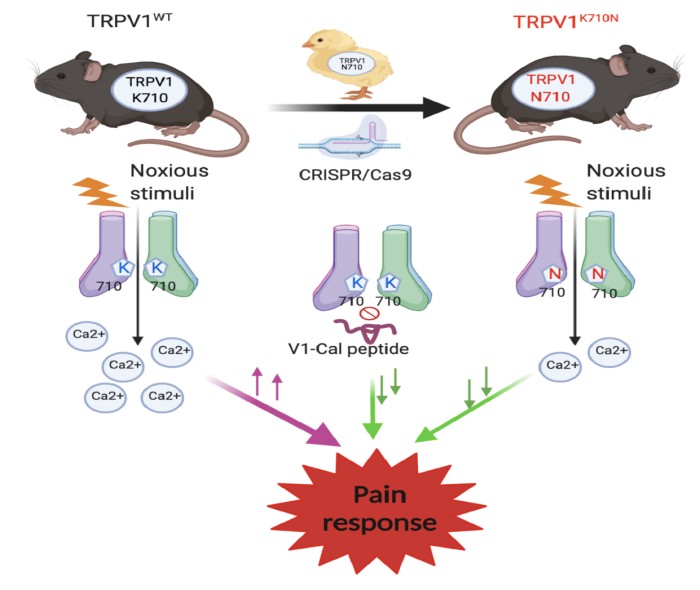Recently, Associate Professor He Shufang, a member of the research team led by Professor Zhang Ye from the Department of Anesthesiology and Perioperative Medicine at The Second Affiliated Hospital of Anhui Medical University, published a research paper entitled A human TRPV1 genetic variant within the channel gating domain regulates pain sensitivity in rodents as the first author online in the internationally prestigious journal The Journal of Clinical Investigation (IF: 19.456), which provided a new idea and target for the research and development of non-opioid analgesics. The paper was completed by He Shufang in collaboration with Stanford University in the United States, with Eric R. Gross, a professor in the Department of Anesthesiology at Stanford University School of Medicine, as the corresponding author, and The Second Affiliated Hospital of our university as the first author’s affiliation.
Using CRISPR/Cas-9 gene editing technology, the authors generated a TRPV1K710N-knockin mouse and discovered that the transgenic mouse was significantly less sensitive to acute pain and chronic pain caused by nerve injury, but still retained intact response to noxious heat stimulation. In vitro, the calcium influx of sensory neuron from the TRPV1K710N rodent was significantly reduced under the stimulation of capsaicin. The cell-penetrating peptide designed for the K710 region can also reduce the acute pain response, hypersensitivity induced by nerve injury, and the capsaicin-induced calcium influx in neurons.

The research findings have proved that K710 is a key site that determines TRPV1 channel opening and pain response. By gene editing or using sequence-specific polypeptides, limiting rather than completely inhibiting TRPV1 can alleviate pain without affecting other normal functions of the receptor, providing a new idea and target for the development of non-opioid analgesics.
This research was supported by the Visiting Scholar Program of the National Scholarship Foundation of China and the National Natural Science Foundation of China. The research experiments were mainly carried out at Stanford University and in the Key Laboratory of Anesthesiology and Perioperative Medicine of THe Second Affiliated Hospital of Anhui Medical University.
Link to the paper:https://www.jci.org/articles/view/163735
